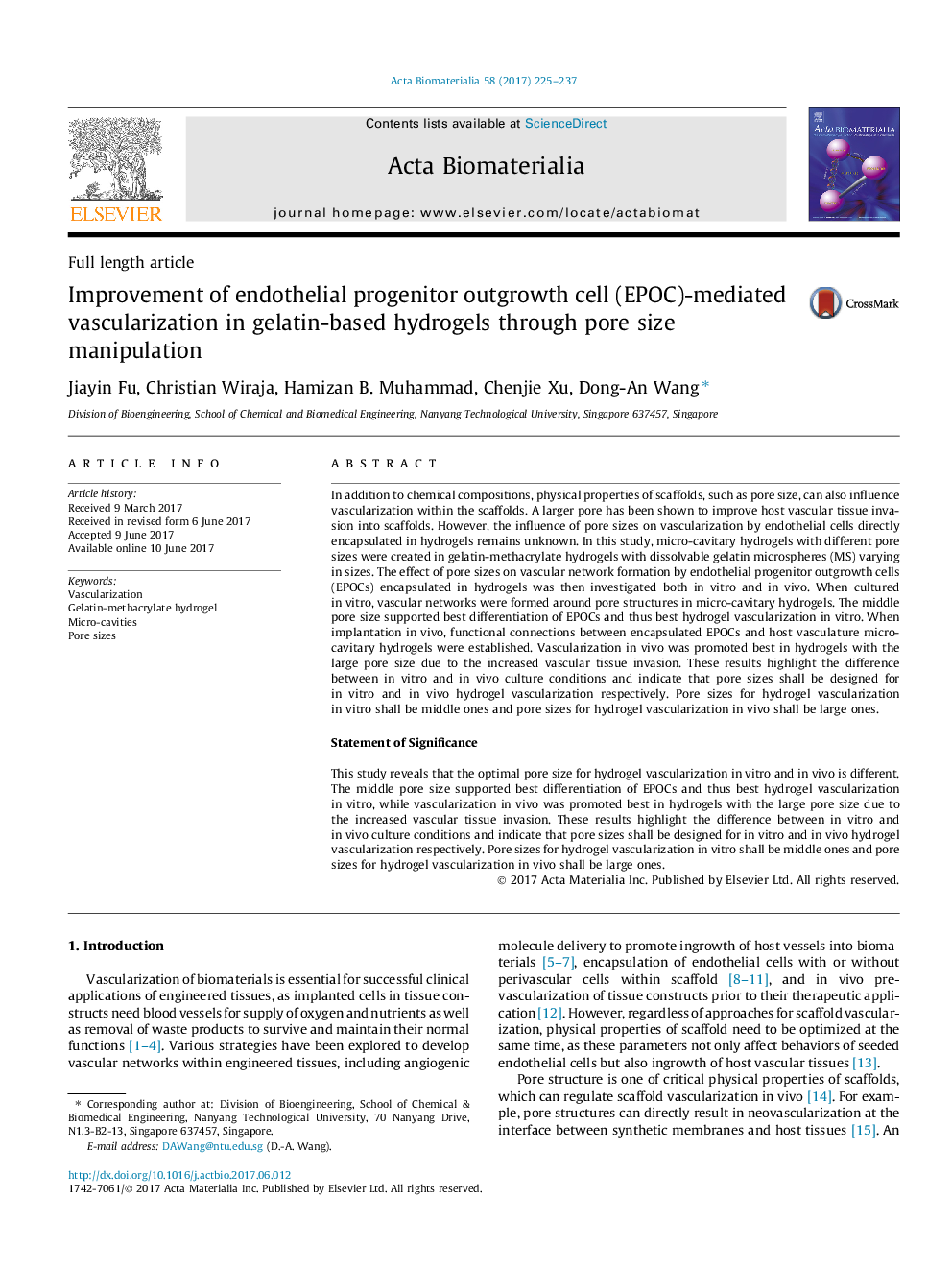| کد مقاله | کد نشریه | سال انتشار | مقاله انگلیسی | نسخه تمام متن |
|---|---|---|---|---|
| 6449399 | 1415928 | 2017 | 13 صفحه PDF | دانلود رایگان |

In addition to chemical compositions, physical properties of scaffolds, such as pore size, can also influence vascularization within the scaffolds. A larger pore has been shown to improve host vascular tissue invasion into scaffolds. However, the influence of pore sizes on vascularization by endothelial cells directly encapsulated in hydrogels remains unknown. In this study, micro-cavitary hydrogels with different pore sizes were created in gelatin-methacrylate hydrogels with dissolvable gelatin microspheres (MS) varying in sizes. The effect of pore sizes on vascular network formation by endothelial progenitor outgrowth cells (EPOCs) encapsulated in hydrogels was then investigated both in vitro and in vivo. When cultured in vitro, vascular networks were formed around pore structures in micro-cavitary hydrogels. The middle pore size supported best differentiation of EPOCs and thus best hydrogel vascularization in vitro. When implantation in vivo, functional connections between encapsulated EPOCs and host vasculature micro-cavitary hydrogels were established. Vascularization in vivo was promoted best in hydrogels with the large pore size due to the increased vascular tissue invasion. These results highlight the difference between in vitro and in vivo culture conditions and indicate that pore sizes shall be designed for in vitro and in vivo hydrogel vascularization respectively. Pore sizes for hydrogel vascularization in vitro shall be middle ones and pore sizes for hydrogel vascularization in vivo shall be large ones.Statement of SignificanceThis study reveals that the optimal pore size for hydrogel vascularization in vitro and in vivo is different. The middle pore size supported best differentiation of EPOCs and thus best hydrogel vascularization in vitro, while vascularization in vivo was promoted best in hydrogels with the large pore size due to the increased vascular tissue invasion. These results highlight the difference between in vitro and in vivo culture conditions and indicate that pore sizes shall be designed for in vitro and in vivo hydrogel vascularization respectively. Pore sizes for hydrogel vascularization in vitro shall be middle ones and pore sizes for hydrogel vascularization in vivo shall be large ones.
202
Journal: Acta Biomaterialia - Volume 58, August 2017, Pages 225-237